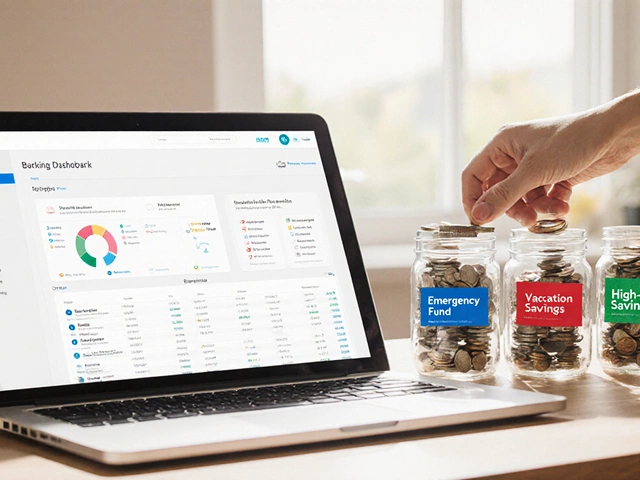
Tax Refund Estimator
Ever filed your taxes and wondered why the refund check looks more like a postcard than a payday? A tiny tax refund can feel like you’re missing out, but the truth is most of the money you paid to the IRS never really left your pocket-it was just returned later. Understanding why the amount is small helps you keep more of your earnings each year.
Key Takeaways
- Refund size is driven by how much tax was withheld versus your actual tax liability.
- Credits, deductions, filing status, and income changes all shrink or grow the refund.
- A quick audit of your W‑4, AGI, and credit eligibility usually reveals the cause.
- Adjusting withholding, maximizing refundable credits, and timing deductions can boost next year’s refund.
- Use a reliable IRS tax calculator to preview your refund before you file.
What a Tax Refund Actually Is
Tax Refund is the amount the Internal Revenue Service (IRS) sends back to a taxpayer when the total tax withheld or paid during the year exceeds the taxpayer’s final tax liability. In other words, it’s the IRS returning over‑paid taxes. Most people think a refund is a bonus, but it’s really a repayment of money you already gave the government.
Main Factors That Shrink Your Refund
Several moving parts determine whether you get a big check or a modest one. Below are the most common culprits.
1. Tax Withholding vs. Actual Liability
Tax Withholding is the portion of each paycheck that your employer sends to the IRS on your behalf, based on the information you provided on Form W‑4. If your employer withheld less than what you owe, the difference shows up as a smaller refund (or a balance due). This can happen when you claim too many allowances or when your income rises mid‑year.
2. Adjusted Gross Income (AGI) and Tax Brackets
Adjusted Gross Income (AGI) is your total income minus specific adjustments such as student loan interest or contributions to a traditional IRA. A higher AGI pushes you into a higher marginal tax rate, which means you owe more tax for the same amount of withholding.
3. Tax Credits vs. Tax Deductions
Tax Credits directly reduce your tax liability dollar for dollar, while Tax Deductions lower your taxable income. Credits are more powerful for refunds because many are refundable, meaning they can generate a refund even if they exceed your tax liability. Missing out on eligible credits is a frequent reason refunds feel “tiny.”
4. Specific Refundable Credits
Two of the most impactful refundable credits are:
- Earned Income Tax Credit (EITC) - designed for low‑to‑moderate‑income earners; the credit amount can be several thousand dollars.
- Child Tax Credit - up to $2,000 per qualifying child, with $1,500 refundable.
If you don’t qualify or forget to claim them, your refund shrinks dramatically.
5. Filing Status and Dependents
Changing from “Single” to “Head of Household” or adding a dependent can increase the standard deduction and open up extra credits. Conversely, filing jointly when one spouse has high income can push the couple into a higher bracket, lowering the refund.
6. Errors on Form W‑4
Your W‑4 determines daily withholding. Common mistakes include:
- Leaving the “extra withholding” box blank when you need more withheld.
- Claiming too many dependents on the new 2024‑2025 form layout.
- Not updating the form after a raise, marriage, or new child.
Even a small mis‑step can shave hundreds off your refund.
Quick Diagnose Checklist
- Grab your latest pay stub and compare the year‑to‑date federal tax withheld to the amount on your 2024 Form 1040 line 25.
- Calculate your AGI using IRS Form 1040 line 11; see if a higher AGI pushed you into a higher bracket.
- List every credit you qualified for (EITC, Child Tax Credit, American Opportunity Credit, etc.) and verify they appear on your return.
- Check whether you chose the standard deduction or itemized; compare the two figures.
- Review your current W‑4; adjust allowances or extra withholding if needed.
How to Increase Your Refund Next Year
Once you know the culprits, you can take concrete steps to grow the next check.
- Adjust Your W‑4: Increase the number of allowances or add an extra withholding amount to match your expected liability.
- Maximize Refundable Credits: Ensure you claim EITC, Child Tax Credit, and any education credits you’re eligible for.
- Contribute to Retirement Accounts: Traditional IRA or 401(k) contributions lower your AGI, which can push you into a lower tax bracket.
- Time Your Deductions: Bunch charitable donations or medical expenses into the year when they’ll exceed the 7.5% AGI threshold, making them deductible.
- Consider Itemizing if your total deductions (mortgage interest, state taxes, charitable gifts) exceed the standard deduction for your filing status.
Use an IRS Tax Calculator to Preview Your Refund
IRS Tax Calculator is a free online tool that lets you input income, withholding, credits, and deductions to estimate your tax liability and refund before you file. Running a quick simulation after any life change (new job, marriage, child) helps you see the impact on your refund and adjust withholding in real time.

Common Pitfalls to Avoid
- Forgetting State Taxes: Some people focus only on the federal side and overlook large state refunds that offset the net amount.
- Missing Pre‑Tax Benefits: Contributions to health‑savings accounts (HSAs) or flexible spending accounts (FSAs) reduce taxable wages, but only if you report them correctly.
- Over‑Estimating Deductions: Claiming more charitable gifts than you have receipts can trigger an audit and nullify those deductions.
- Not Updating W‑4 After a Pay Raise: Higher earnings mean higher tax liability; unless you raise your withholding, the refund shrinks.
Comparison: Why Refunds Are Small vs. How to Boost Them
| Trigger | Typical Impact | Boost Strategy |
|---|---|---|
| Low withholding | Refund reduced by $500‑$2,000 | Increase allowances or add extra withholding on Form W‑4 |
| Higher AGI moving you to a higher bracket | Tax liability rises, cutting refund | Contribute to traditional IRA or 401(k) to lower AGI |
| Missing refundable credits (EITC, Child Tax Credit) | Potential loss of $1,000‑$3,000 | Run credit eligibility check each year; claim on Schedule 3 |
| Choosing standard deduction when itemizing would be larger | Lost deduction value of $500‑$2,500 | Track deductible expenses; itemize if total exceeds standard |
| Errors on W‑4 after life changes | Unexpected tax due or small refund | Update W‑4 within 30 days of any major event |
Frequently Asked Questions
Why does a higher income sometimes mean a smaller refund?
A larger income raises your Adjusted Gross Income, which can push you into a higher marginal tax rate. Even if your employer withholds the same percentage, the absolute tax due climbs, leaving less over‑payment to return.
Can I get a bigger refund by withholding more than I owe?
Yes, but it’s essentially giving the government an interest‑free loan. It’s better to aim for a modest refund and keep the extra cash throughout the year.
What’s the difference between a refundable and a non‑refundable credit?
A refundable credit can push your tax liability below zero, generating a cash refund. A non‑refundable credit only reduces liability to zero; any excess is lost.
Should I switch from the standard deduction to itemizing each year?
Only if your total deductible expenses (mortgage interest, state taxes, charitable gifts, medical costs) exceed the standard deduction for your filing status. Otherwise, the standard deduction is simpler and often larger.
How often should I update my W‑4?
Any time you experience a major life change-marriage, divorce, birth of a child, new job, or a significant raise-review and adjust your W‑4 within a month.
Next Steps
1. Pull your most recent pay stub and compare the federal tax withheld to your 2024 Form 1040 line 25.
2. Run the IRS Tax Calculator with your current income and deduction estimates.
3. If the preview shows a small refund, adjust your W‑4 now and submit it to your employer.
4. Keep a running list of potential credits (EITC, Child Tax Credit, education credits) throughout the year so you don’t miss them at filing time.
5. Review your deduction strategy before next tax season and decide whether itemizing will beat the standard deduction.
By tackling each of these steps, you’ll turn that postcard‑size refund into a more satisfying return of the money you rightfully keep.







Write a comment